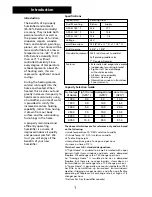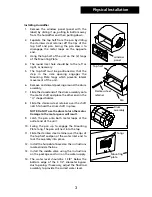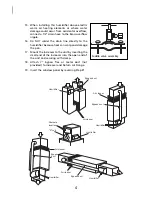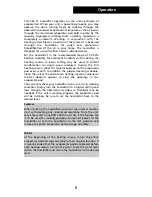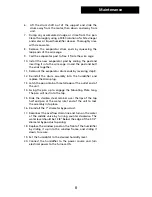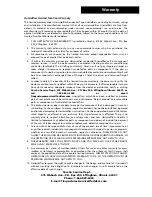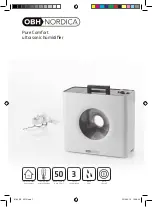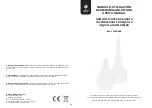
Type of Unit
Rotating Drum
Duct Mounting
Return
Supply
GPD @ 140 ° F
22.5
17.1
GPD @ 120 ° F
16.5
12.4
GPD @ 100 ° F
10.6
7.8
Voltage
24V
Unit Dimensions
14 3/4” W x 11” D x 11 1/2” H
Duct Opening
4 5/8” x 7 5/8”
Standard Equipment
Wall / duct mount humidistat
Self piercing saddle valve
7” Flange & Damper
Features
• Externally held evaporative media
• Independent mounting bracket
• Right or left hand discharge
without disassembly
• All brass valve assembly
• Stainless steel cage
• Observation window in front door
• 2 year warranty
Sq. Footage
of Home
1000
1500
2000
2500
3000
4000
Tight Home
(GPD*)
0.5
3.0
5.0
7.5
10.0
14.5
Average Home
(GPD*)
5.0
10.0
14.0
19.0
23.5
33.0
Loose Home
(GPD*)
10.0
16.5
24.0
30.5
37.5
51.5
The above calculations are for reference only and are based
on the following:
• Inside temperature 70° F/35% relative humidity
• Outside Temp 20° F /70% relative humidity
• 8 foot ceiling height
• Internal moisture gain of one pound per hour
• Furnace on-time of 70%
This chart uses A.R.I. standard designations:
A “Tight Home” is assumed to be well insulated with vapor
barriers, tight storm windows and doors, and a dampered
fireplace. Air exchange rate of .50 changes per hour.
An “Average Home” is insulated and has a dampered
fireplace, but there are no vapor barriers, storm doors, or
storm windows. Air exchange rate of 1.0 change per hour.
A “Loose Home” is generally one constructed before 1930,
has little or no insulation, no storm doors, storm windows,
weather stripping or vapor barriers, and often no effective
dampering of fireplaces. Air exchange rate is as high as 1.5
changes per hour.
* Gallons Per Day (humidifier capacity)
1
Introduction
The benefits of a properly
humidified environment
(35-50% Relative Humidity)
are many. They include both
personal comfort as well as
the preservation of furniture,
draperies, carpets, wooden
floors and cabinets, paintings,
pianos, etc.. Your home will be
more comfortable at a lower
temperature (i.e.: 68° F) at 30-
40% Relative Humidity (RH)
than at 71° F without
controlled humidity. Since
every degree of temperature
setback represents about 3%
of heating costs, this can
represent a significant annual
savings.
During the heating season,
cold air is brought into the
home and heated. When
heated, this air dries out and
greatly increases its capacity to
hold more moisture. By using
a humidifier, a source of water
is provided to satisfy this
increased moisture holding
capability, rather than having
it drawn from our body
surface and the surrounding
furnishings in the home.
A properly maintained and
efficiently operating
humidifier is a source of
improved indoor air quality
and personal comfort. We
trust you will enjoy all the
benefits of your new
humidifier.
Introduction
Capacity Selection Guide
Specifications


